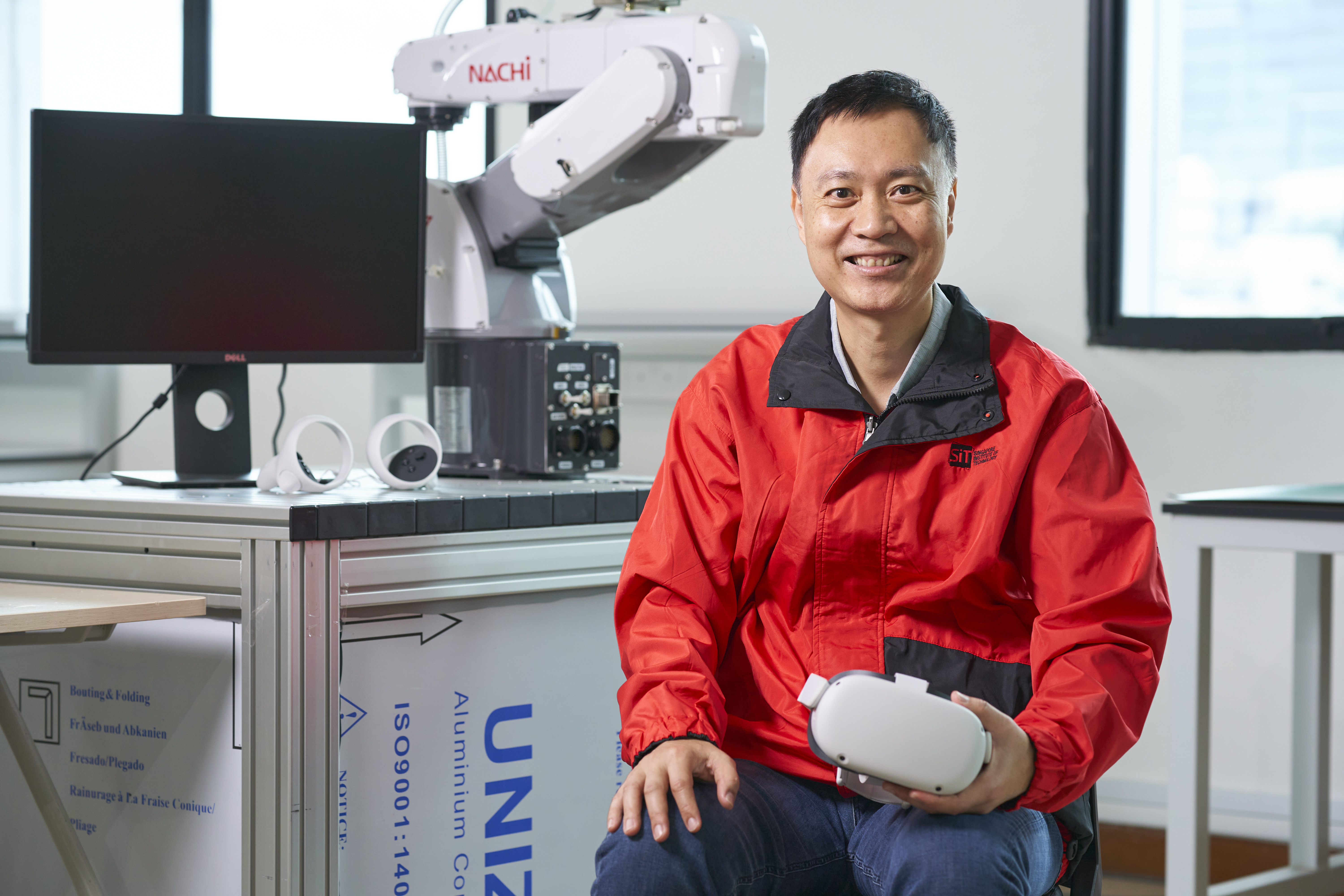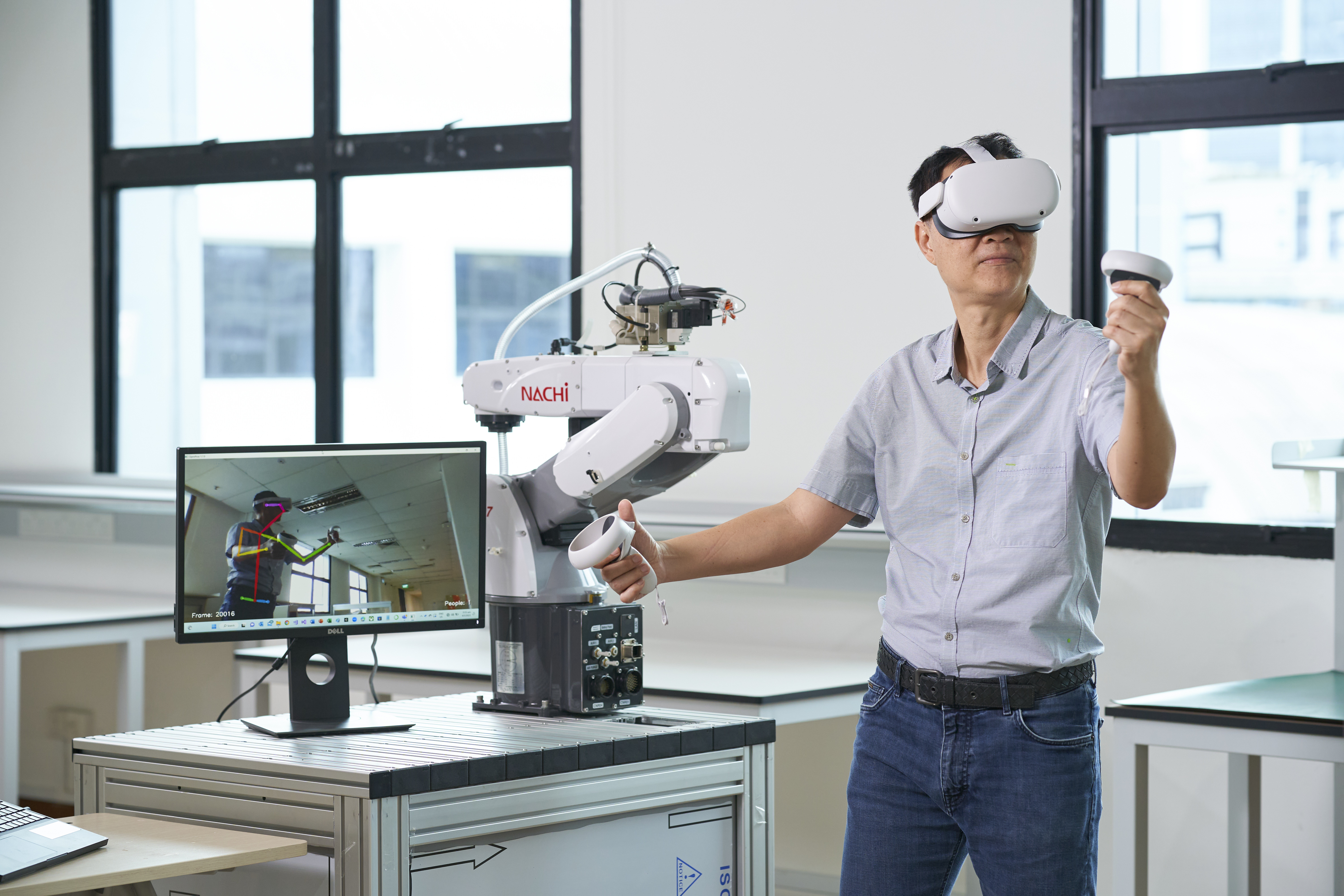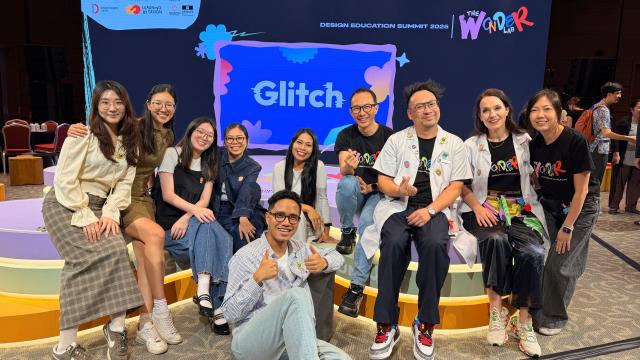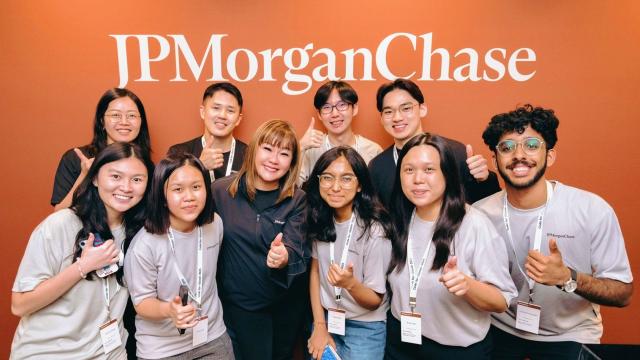Part of Dr Quah Chee Kwang’s role as a Lead Professional Officer at SIT involves working closely with industry partners to develop innovation projects that he hopes will one day make an impact beyond our shores.
Engineer, academic, and researcher – before he joined SIT as a Lead Professional Officer (LPO), Dr Quah Chee Kwang enjoyed success in different roles as he pursued his interest in AI, robotics, augmented/virtual reality (AR/VR), and more. Dr Quah holds PhD in Computer Engineering from Nanyang Technological University, Singapore as well as a Master of Science from University of Surrey, England and a Bachelor of Engineering from University of Leeds, England.

Dr Quah Chee Kwang is a Lead Professional Officer at SIT with years of experience in industrial and applied research. (SIT Photo: Keng Photography/Tan Eng Keng)
Over the years, he has grown accustomed to wearing different hats and his work experience spans both industrial and applied research at companies such as ST Engineering, Nanyang Technological University, and DSO National Laboratories. For a time, he was also a visiting researcher at the National Institute for Research in Digital Science and Technology (INRIA), France.
He said, “My time at INRIA was a rewarding and memorable experience because I could focus on the practical applications of research work – something I am passionate about. I also had the opportunity to work with some of the top researchers in the areas of computer vision and graphics.”
Between Theory and Practice
Dr Quah has always enjoyed tinkering with ideas and concepts in different fields. He is known for his expertise in computer vision, 3D human modelling, motion tracking and analysis, graphics, artificial intelligence, virtual and augmented reality.
He said, “There are some things you can learn only by ‘doing’ to gain a deeper understanding. But there is not much use in learning about theory in a vacuum either.”
This is something that Dr Quah tries to get his students to understand.
He explained, “We need to constantly review and ‘recalibrate’ between theory and practical as we learn more about a subject, so that the theory forms the explanation that connects with the practical application.”
Current Research Work
Aside from his role as LPO, he is also the Deputy Head at SIT-Poly Innovation Centre of Excellence (SPICE) and Capability Development Lead (Engineering Software/Programming) at SIT.
His job scope includes providing technical solutions and proposing novel methods that seed innovation projects. Some of the projects he has led in the past include co-inventing a patented intelligent tactical engagement trainer, augmented reality on a robotics platform, virtual weaponry, video-based performance analysis, and a digital twin concept for smart district. He has published numerous international reference articles and co-invented a patent on intelligent robots. Currently, his application domains cover healthcare, smart city, education, defence, and sports.
Of late, he has been working on a project that employs cameras instead of sensors for human movement control tracking in motion capture. He wants to develop a less intrusive and ‘clumsy’ technology, which not only has applications in the media arts but potential use in other fields such as sports and medicine. He is also interested in how AI can be harnessed in more intuitive and natural ways.
Dr Quah likes the diversity at SIT as it allows him to explore opportunities for interdisciplinary collaboration. He believes that SIT has the brain trust to help companies produce something groundbreaking with global impact.

One of Dr Quah's upcoming projects is using camera-based motion capture for human-robotic interactive control. (SIT Photo: Keng Photography/Tan Eng Keng)
Synergy Between Academia and Industry
When it comes to collaborating with industry on innovation projects, Dr Quah said that the university should steer the direction on research, and even help define the market for new ideas and products.
He shared, “This is how a university can truly add value to industry’s efforts to innovate. Most companies tend to be concerned about the bottom line, and this may have an impact on innovation thinking. It is understandable that companies tend to lean towards problem-solving in their innovation style. The disadvantage is that the true potential of research cannot be attained.”
Universities also have the means to address bigger and more strategic aspects of innovation e.g., SIT’s collaboration with industry on artificial intelligent and robotics. By collaborating with universities like SIT, companies can speed up the innovation process.
Dr Quah emphasised, “When it comes to innovation. Time is of the essence. There are many innovators trying to get their ideas and products out there. It is a very competitive space.”
The Opportunity to Unlearn
He often tells students that an effective solution does not need to be complicated – even when the problem is.
Being able to unlearn is sometimes underrated. But Dr Quah believes it paves the way for students to strengthen their grasp of fundamental concepts while gaining new knowledge and skills.
He said, “The important thing is to get students to ‘unwind’ their thinking; and be able to dissect and decompose the bigger problems into smaller parts. Being able to unpack a problem can bring about clarity to its complexity. Over time, and with practice, students can even learn to apply fundamental concepts to solve different problems and transfer their learning to more than one industry.”
Learning for Life
To him, there is no such thing as a good student or bad student. Given time and patience, and with the right guidance, every student can fulfil their potential. Citing his own experience, he confessed to failing some subjects when he was in the polytechnic. That is why he always tells students that he does not differentiate ‘A’ students from ‘D’ students.
He explained, “If you give students some time, they may be able to figure things out on their own!”
Because of SIT’s emphasis on practical application in its programmes, Dr Quah observed that fresh graduates tend to pick up faster at the workplace. But he said this advantage is short-term.
Dr Quah said, “Over time, their peers from other universities will catch up. Therefore, in order to stay ahead, SITizens must pursue lifelong learning and upgrade their skills. It is important not to remain static in your current success but instead strive to learn continuously.”















![[FA] SIT One SITizen Alumni Initiative_Web banner_1244px x 688px.jpg](/sites/default/files/2024-12/%5BFA%5D%20%20SIT%20One%20SITizen%20Alumni%20Initiative_Web%20banner_1244px%20x%20688px.jpg)


